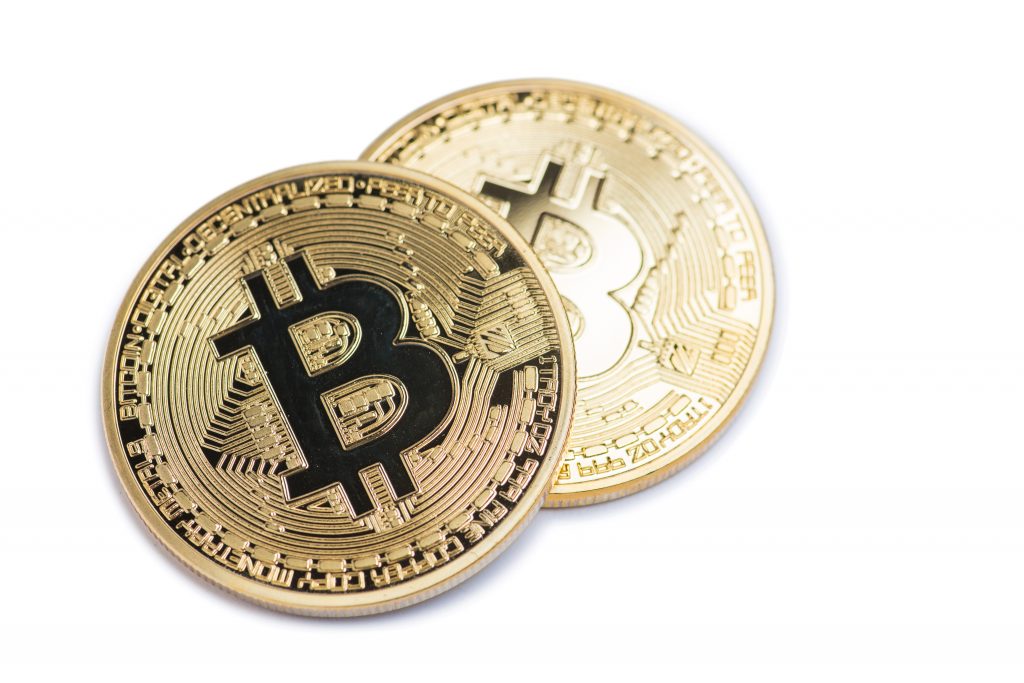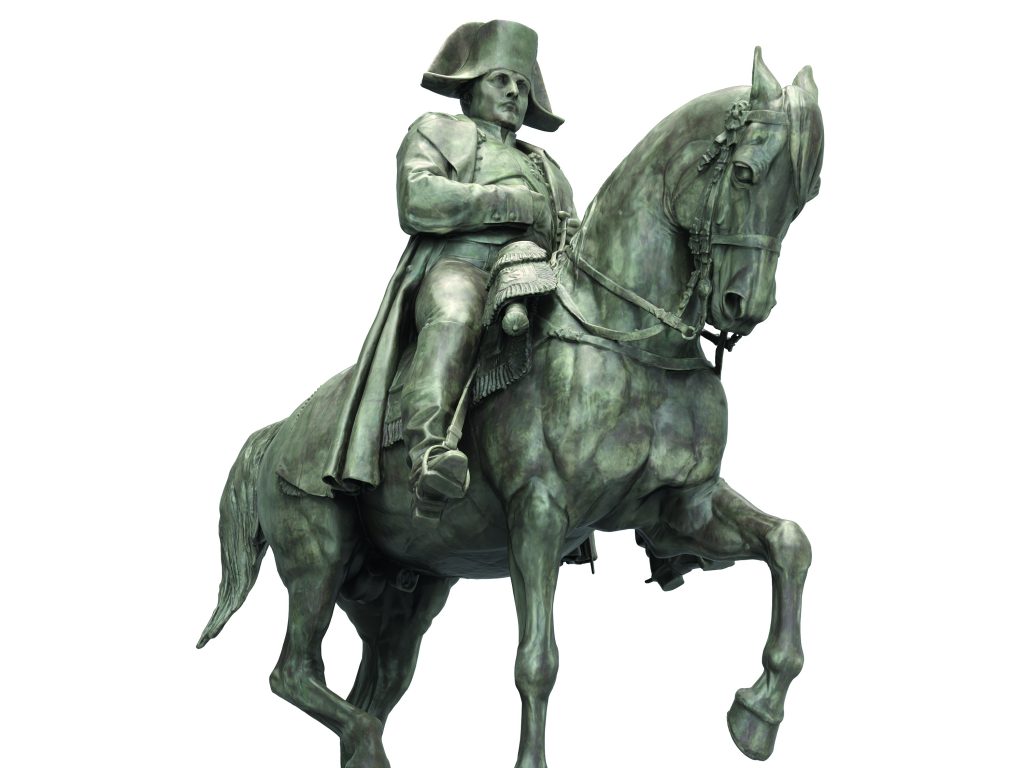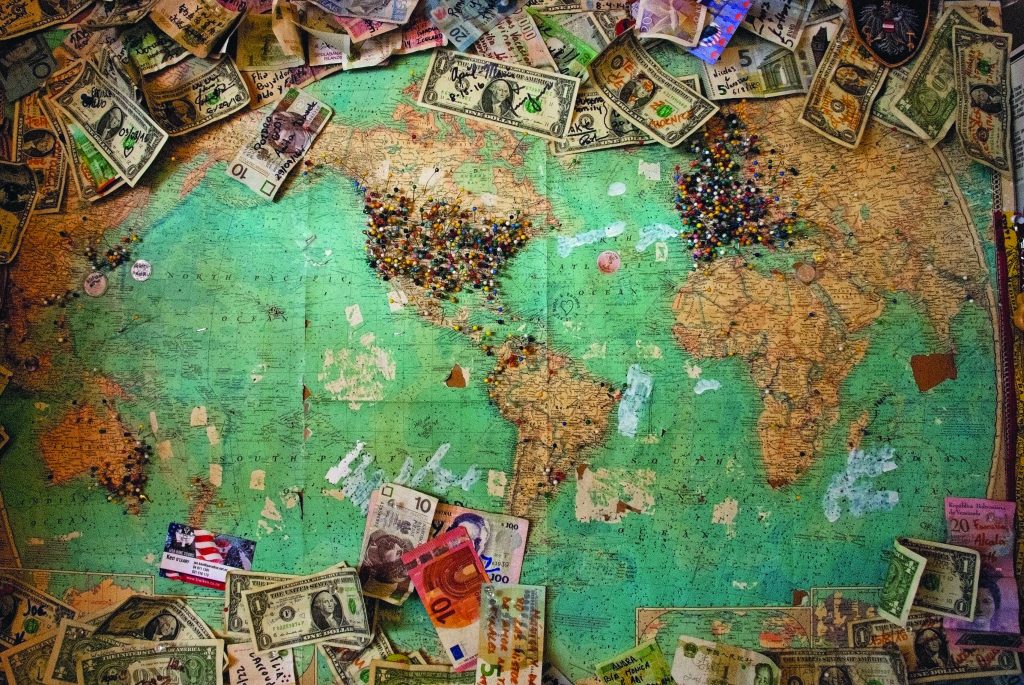In May, 1970, the banks in Ireland went on strike. The Irish, who were used to months long strikes in the banking sector since the 60’s, did not flinch. In a country with a strong pub culture like Ireland, where a visit to the pub is a part of the daily routine, 11 thousand small bars and pubs with a steady regular crowd assumed responsibility and turned themselves into small banks.
It was based on mutual trust. The pub owners, who knew their regular customers and could tell which of them will be able to pay off their debts, took cheques. When the supply of cheques dried up, people started making their own promissory notes, sometimes written on the back of cigarette packs or napkins, in exchange for cash. Citizens kept drinking, buying food and clothes and making even bigger purchases, all sponsored by their local pubs. The available cash kept moving between the local pubs, grocery stores and other local retailers.

More than 3 billion pounds changed hands during the six months long strike, that ended in November that year. The Irish economy held, only a few cheques and promissory notes were not honored. The sense of community and mutual purpose enabled 3 million citizens’ lives to go on. In fact, Irish GDP actually grew following the strike.
The thought of a strike in the banking system might be baffling to the average person. Banks today are an integral part of our lives. We rely on our bank to keep cash flowing through the ATMs, to keep our monthly salary safe, to loan us money when we want to buy a car, to give us a mortgage when it’s time to buy a house. But the Irish Pubs example raises a question which is becoming more relevant with every day passing: is it really possible to sustain a normal economical system without concentrated financial institutions, such as banks?
Israeli prime minister Benjamin Netanyahu said recently, while meeting reporters in the canteen of the Israeli parliament, the Knesset, that banks are bound to disappear. “The reason that you don’t sell money is because of the risk, and so you use intermediaries who handle the risk, and that is the reason that banks exist. Will banks eventually disappear? the answer is yes. Should it happen tomorrow and should it happen because of Bitcoin? That is a question mark, but Bitcoin is certainly pushing in that direction.”
A Country With A Bank
The first banks were private citizens who were handing out loans in the shape of goods (first documented in 9000 BC). The use of goods such as metals, products and livestock as means for trade led to the first coins, made of metal and considered valuable starting 700 BC in areas that are nowadays China and India. Paper money started appearing around the seventh century, under the Tang Dynasty in China. By the 12th century they were printing bills worth 26 million gold coins every year. The first banknotes in Europe were issued only in 1661.
In the middle ages it was only Jewish merchants in Italy who were allowed to offer loans with interest, as The Church banned usury and forbade its followers to charge interest. The Jewish merchants sat on the ‘banco’ – ancient Italian for bench and the origin for the word bank – and gave loans to the Christian communities of Florence, Venice and Genoa. The first official bank was established in Italy in 1157 in order to fund the crusades, according to popular belief. Christians eventually found a way around the usury ban of The Church in the 13th century, and powerful families from Florence (the most powerful among them was the House of Medici) founded banks around Italy and from there spread out to the rest of Europe.
Throughout the 16th and 17th centuries, the traditional trade of banks, such as loans and exchange, were combined with the need of the developing new world and promoted industrial and trade growth. Yet, the main industry funded by banks was still the war industry. The Napoleonic wars in the beginning of the 19th century are the perfect example. “Fighting a war has always demanded big funding. If there wasn’t enough gold, the country would create money,” explains Dr. Sharon Gordon, a researcher in The Cohn Institute For The History And Philosophy Of Science and Ideas in Tel Aviv University. The frequent wars in Europe in those days forced countries to establish a bank that will serve national needs – what is nowadays the central bank.
Banks kept growing and developing in the 19th century, mostly in England, whose needs were changed after the industrial revolution. “Countries realized that the banking system can be far more than a vessel to finance wars, it’s a tool to regulate the monetary and financial systems,” further explains Dr. Gordon. “The country started pushing toward regulating the financial system, and regulating the population. The relationship between state and bank had changed.”
Another change that arose in the 19th century was the founding of nation states, replacing empires before them. “That created a tight connection between a nation’s consciousness and a country’s identity,” says Dr. Gordon. “This development is clearly connected to economical changes.”
This meant changes to the social ladder as well. New social statuses were created, the old economical hierarchy started changing. “If previously there were nobles and peasants, and your political rights were connected to your economical rights, it stopped in the 19th century. The economy was no longer based on limitations. Each man to his own,” says Dr Gordon.
Not just industry and trade were accelerated, but also transportation. Being able to move between countries with the help of new railways gave freedom of movement and occupation like never before. “The economy became far more complex. Everything was bigger. The need to transport fortunes was added to the need to transport people,” she adds. “The state started interfering, and Germany is the ultimate example for this. It created the investment system in order to create the railway system. They were also the first to have social legislation – social security. The entire monetary and financial system changed. The state was given complete monopoly over money.”

2008 Crisis: When Empires Fall
The United States Central Bank was founded in 1913 for various reasons, among them the Panic of 1907, which led for a demand to a control system that will alleviate financial crises. The bank’s mandate includes responsibility for the monetary policy of the US and its regulation. The story behind the creation of the bank was exposed in 1916 by Bertie Charles Forbes, who founded Forbes Magazine a 100 years ago.
In 1910 a confidential meeting was held in Jekyll Island, off the coast of Georgia in the US. Discreetly they arrived, among them Senator Nelson Aldrich, who was heading the National Monetary Commission, aiming to find new reforms for the financial sector, and who was also a partner of banker J.P. Morgan. Aldrich was looking for a way to break the market’s concentration in the financial sector, a matter that was rising in public awareness since the crisis. Aldrich grouped around him Abraham Andrew, Assistant Secretary of the Treasury, Frank Vanderlip, president of the National City Bank of New York and representing the Rockefeller family interests, Henry Davidson, a partner of J.P. Morgan, and a few more representatives of banks and powerful families such as the Rothschilds. They met and formed a new concept, which in three years became the proposal to establish the Federal Reserve.
In his book The Creature From Jekyll Island, Edward Griffin sheds light on the reason the meeting was kept confidential: it was a law aiming to break the money fraternity – written by the money fraternity. Had the public known who’s behind the proposal it would have never accepted it. But after months of discussions and rewriting the suggestion was accepted and the bank was founded.
Let’s fast forward, to the years 2007-8. After years of prosperity and growth the subprime mortgage crisis broke out, causing a sharp dive for the American economy and subsequently a worldwide recession. Lehman Brothers, one of America’s four biggest investment banks, had to declare bankruptcy. Many others needed financial rescue by the same Federal Reserve, which invested 6.4 trillion dollars from taxpayers’ money rescuing and loaning money to banks and other firms in order to prevent bankruptcies.
The crisis hit hard in Europe as well. Unemployment rate in Spain, England, Ireland, Portugal and especially in Greece increased sharply. Central banks around the continent rescued many banks from bankruptcy. In response, violent demonstrations took place around the continent, protesting, among other things, against the decision to take private citizens money in order to help out the banks. The crisis had a direct or indirect effect on almost every country around the world, with the public mostly blaming banks – and the general distrust towards financial institutes just kept rising.
The Bitcoin: All For One
Two months after the beginning of the crisis a new term appeared in our lives, turning quickly from a vague phrase (“virtual coin”) to an idiom used to describe the New Economy. In January 9, 2009, an unknown entity called Satoshi Nakamoto released the first bitcoin. Nakamoto, claiming he’s a Japanese man in his 30’s, said he started working on the open protocol in 2007 for various reasons, among them the subprime crisis.
The new coin is defined today as a “digital asset”, and the main idea behind it is decentralization: there just isn’t a main institution that is in charge of regulating it. Bitcoin, which while writing these lines crossed the $15,000 line and is showing a picture of exponential rise in the last few months, is the most familiar and traded form of the Blockchain technology that is behind it.
The big advantage of blockchain technology is that it has no need for one big central computer or one big managing entity to keep records. Through this technology the relevant information regarding a deal, for example, is coded into a specific “block”. The next deal is coded into another block, thus creating a chain of blocks – hence the name blockchain.
These blocks are made in a way that makes breaking into them very difficult. A peer chain, P2P, is in charge of creating the blocks and approving every newly created block. The combination of the unique cryptographic security and the human chain makes this technology nearly impenetrable. Every member of the Bitcoin network helps by contributing a part of his computer’s power to calculate and encrypt, which adds up to the general effort of the network’s members. The relevant data (be it a virtual coin, a shipment document, a medical file or any other kind of data) is encrypted into a block. With time, more and more blocks are gathered, all protecting each other from being broken into. The longer the chain the more protected it is. Each deal or a value exchange between peers is documented and approved by all peers in the platform, and this is what creates the needed trust – a trust which is normally created by a reliable third factor, the bank.
This is how a decentralized democratic network, with no central entity, is enabled. Responsibility and authority are equally divided between the network members. “We believe that economy works best when it works for everyone,” wrote Don Tapscott in his book Blockchain Revolution, published 2016. Indeed, the Blockchain based Bitcoin’s economic model means that everyone can join the party. There is no bank in the chain that will determine if you are eligible to open an account: the central entity becomes irrelevant.
So what impact will the new technology have on substantial powerful bodies such as banks? Even more so, how will it affect the power of countries and their abilities to control their economy? Since Blockchain technology is at its very beginning it seems too early to predict, but there are already people believing this is the guaranteed path to a dramatic change.
“The first thing to happen, already in the coming years, is that banks will open their own internal Blockchain networks”, predicts futurist Dr. Roey Tzezana, who recently published his book Rulers of the Future, which talks about, among other things, the development of Blockchain. “These will be private networks that banks will support and use to save data on as well as using it for far easier transfers.”
Nowadays, says Tzezana, the banks are using networks such as SWIFT for international bank transfers. But these networks charge high commissions and are slowing the process. “Banks from two different countries wouldn’t just trust each other. They need an intermediate entity, and that entity’s services cost money. An internal Blockchain network operated by banks, on the other hand, will make these processes cheaper and more efficient.”
However, the internal use is just the first step, believes Dr. Tzezana. “The big innovation that will come out of Blockchain will come in two strokes”, he estimates. “The first one is ‘the global notepad’. It’s actually a data reservoir shared by all of humanity, like the internet, but protected at the highest possible level from break ins and data changing, maintained by everyone’s computers and as a result extremely decentralized, which means it won’t have a fail point. What that notepad could enable is creating a reservoir that everyone will save their data on and withdraw from it with an authorization only they have. You could, for example, save in it information about your income, and only you and maybe your partner will be authorized to see it. In addition, you will grant authorization to the government too.”
Giving the government authorization will enable automatic taxing, making accountants and finance managers redundant. The automatic process will cut out a waste of time and resources. “It’s already starting to happen in China,” says Tzezana enthusiastically.
Big companies will also be able to become more efficient by using the digital notepad. “Companies dealing with other companies nowadays have to hire a flock of accountants, lawyers and intermediators that transfer information from one data reservoir to another, pay tax and verify everything is done properly.” But what will happen to all these banks and financial consulting firms that are providing these services nowadays? “Undoubtedly they will take a hard blow,” according to Tzezana.
“The second stroke will come in the shape of autonomous decentralized organizations. These will be algorithms in the Blockchain calculating cloud. If there is a global notepad with text then there can also be a ‘global computer’. Millions of computers will cooperate with each other and run code-lines with a decentralized technique. What will then happen is that there will actually be independently running algorithms in the cloud that will give financial services with insignificant cost compared to today.”
Tzezana mentions also the future redundancy of a human making the decisions. “If this will be done right then we won’t have to rely on human managers’ limited ability to make decisions, which we’re witnessing again and again because they’re not as accomplished as algorithms which were made to take decisions in multiple situations.”
Direct Banking: The Future?
The first direct bank, called simply First Direct, was founded in England already in 1989. Direct banks are banks that function without the common structure of a branch network and normally exist only online, thus saving costs and offering their customers lower commissions and charges. Throughout the 90’s several banks of this sort were founded, but most were owned by other, bigger banks. “A decade or two from today there will be banks that will actually be virtual,” says Tzezana. “Banks that are a combination of smart contracts, when one smart contract in the cloud will be enough to coordinate between you and millions of other people, adding up everyone’s money and investing it in a more efficient way in funds.”
Smart contracts are similar to the contracts we know, the ones we use for renting an apartment or taking a mortgage, only this one will be digital, stored on the Blockchain network. As soon as the contract is signed and sealed in the Blockchain network, it’s impossible to change. By being decentralized in the Blockchain network, it’s actually being authenticated by all the other users of the network, which makes it, in practice, impenetrable.
When we ask Tzezana whether this kind of contract will be reliable, he answers with explaining the power of the new “bank”. “This is a whole system, and millions can join it around the world. This thing has an enormous power potential, and its survival and resilience abilities are higher than in any other bank today. Each smart contract is entwined with a lot of other smart contracts. If one of these contracts has a fault then the rest of the smart contracts will notice it and neutralize it.”
If the rise and establishment of banks in modern culture during the 19th and 20th centuries was directly connected to the founding of nation states then one must wonder what does globalization entail in our economic and geopolitical future. “In my vision for the future world the Blockchain will reach a level where it’s immuned from governments. We and millions of other people will be able to sign up to contracts and those will provide us a system to settle disputes, a system that will sort out our finances, a system for insurance, a system for saving documents and even a system of digital governing, so we can decide who will run and manage this system. It will create a new country. Not a territorial country. I called it Cloud Nations. These are organizations like never seen before. They’re not a country, obviously, because they will have no territory, which is one of the UN’s demands when defining a country. But they’re not a firm or a corporation either. It will allow millions to work together and come up with services that up until now only countries could offer.”
No Hierarchies, No Trouble
It seems that banks or financial corporations are in a really bad place when it comes to public opinion nowadays. According to the Trust Barometer by Edelman, which publishes an annual report since 2012 based on surveys in 28 countries around the world, the levels of trust in the media, government and the business sector is in its lowest rung. If this is not enough, then among all business sectors, financial services are the sector with the lowest trust from the public. The trust rate in banks has dropped since Edelman started publishing the survey. At the same time, trust in digital wallet and online payments is rising. The survey also shows that the fear of corruption, immigration, globalization and others in countries such as the US, France, Italy, Argentina, England, Brazil and Mexico is rising and makes citizens trust financial institutes even less.
Edelman checks every year who would make the most reliable presenter in a commercial campaign. In 2017 the chosen character was “someone like me”, meaning an ordinary person. The characters with the least votes were a CEO, a financial analyst and a government representative.
While trust in banks, governments and other big institutions is dropping, the trust we show people around us is creating a new economic reality: sharing economy based on collaborative consumption. Communities that are based on collaborative consumption have established themselves as indisputable forces in the past few years. These communities would have never worked without the mutual trust between their members. Indeed they include a central managing component, but they’re also an example for the intercontinental will of members of an embracing sharing economy.
While in the past the number of vehicles per household was a status symbol, today, whether as a result of environmental awareness or simply the wish to save money, many people rather use Uber or Lyft or catch a ride with Bla Bla Car. When traveling abroad many will rent an apartment or even a castle on Airbnb instead of booking a room in a fancy hotel. The freelance market has grown too. Companies such as Upwork and Taskrabbit connect freelancers and those who need their services. Those of us who still need an office can now use companies like WeWork, that rent out workspaces, or even just a desk, consequently saving the customer regular management costs and create a networking potential on a daily basis.
“Ever since the 2008 recession we’re in a trend of weakening hierarchy,” says Adi Yoffe, a trends expert and business futurist. “When you talk about hierarchies you mean traditional structures and organizations. It can be business related but it can also be states. This process is accelerated by technology and people are happily embracing it, mostly because it helps them live cheaper and more pertinent to their consumption habits.
“This trend has many consequences: the first is the dependency of people on regular hierarchies. We see it in the way we consume content, in the way we shop and in the way we pay. We’re less depending on traditional hierarchies and past models and far more open to use the new world model. When Amazon launches Amazon Lending, it starts giving loans. It gets in to a territory that up until that moment was well defined: loans are given by a bank. But today Amazon is giving loans, and tomorrow it will provide other bank services. We’re getting used to the idea that the old order doesn’t have to stay the same and that it’s not necessarily the preferred option like we got used to. There are other alternatives.
At the same time, we are going through another process, and that is the transformation to people who look for clear benefits in every interaction of service or shopping,” says Yoffe. “In 2014 I wrote a forecast which I called ‘the minimal consumerism’. Its principles were moving to choosing based on benefits. We’ve become consumers with a decreasing level of loyalty, mainly a skeptical consumer who’s asking questions and is looking for alternatives. That’s the fertile ground for innovation in the banking world: if someone will know to give me, the consumer, benefits, I will consume from that someone, regardless if he’s a bank or not a bank. The whole fintech world is not a classic banking world but models and services trying to challenge banks – from p2p sharing platforms, through payment technologies that are not from the banking world to Bitcoin, which originally started as an alternative to the banking system. In my view, the consumer is seeking cheap prices and he needs to know or feel that he can trust the platform, meaning, there should be trust, exactly the way it’s happening in the new world platforms such as Airbnb and others.”

Future of Money: Cautious Optimism
In Tzezana’s view, technological developments will answer many human needs. “The first layer is the one that the individual is experiencing, and that’s the need of convenience and immediacy. These two needs are fitting the young generation, that wants everything immediately, efficiently and safely. I think this can be provided by the Blockchain and the visible developments. The second layer is the social need, the global. Helping everyone to earn an income, to move forward and to improve their economic status. These two layers are in interaction. I think that because of the first layer a great deal of people will eventually move to use smart contracts, as soon as these will prove worthy, while the second layer is more the domain of governments and large banking systems. In that sense we must wait and see which of these will agree to use a smart contract system and when.”
Nevertheless, despite the optimistic vision, not everything is as bright as it seems when it comes to the developing technology. Blockchain and mostly its iconic currency, Bitcoin, are drawing negative reviews, and some believe that this is a bubble that will soon burst with esoteric repercussions. Bitcoin, for example, which in recent months is invoking many discussions due to the massive increase of its value, is under constant criticism. Skeptics claim that the coin is mostly used by hackers and drug dealers along with tax evaders and people with a reason to do business under the radar. But even if Bitcoin itself will not survive, it’s impossible to ignore the entirety of changes happening in the past few years and their potential for change .
Nation states that were founded and with them the familiar structure of banks are all moving and changing their nature following globalization, immigration waves and technological developments. The biggest banks in the world are starting innovation departments with a double goal. The first, keep up with the changes and themselves offer the public the services companies bypassing banks are offering to consumers. The second is to deal with the consistent decrease in the public’s trust. Bank Leumi went furthest when it launched its payment app, Pepper Pay: the slogan accompanying the campaign was “don’t call me a bank”.
According to a STATISTA research, in 2014 the online purchasing market was 3.1 trillion dollars, in 2017 it was 3.2 trillion, and in 2021 it’s expected to be 5.4 trillion dollars. All these online deals is where Blockchain and Bitcoin are entering, and their effect is still unclear. Will they grow into a bubble that will burst or will it become a new world, built of “cloud nations” and working efficiently, equally and more conveniently, without financial monopolies?





